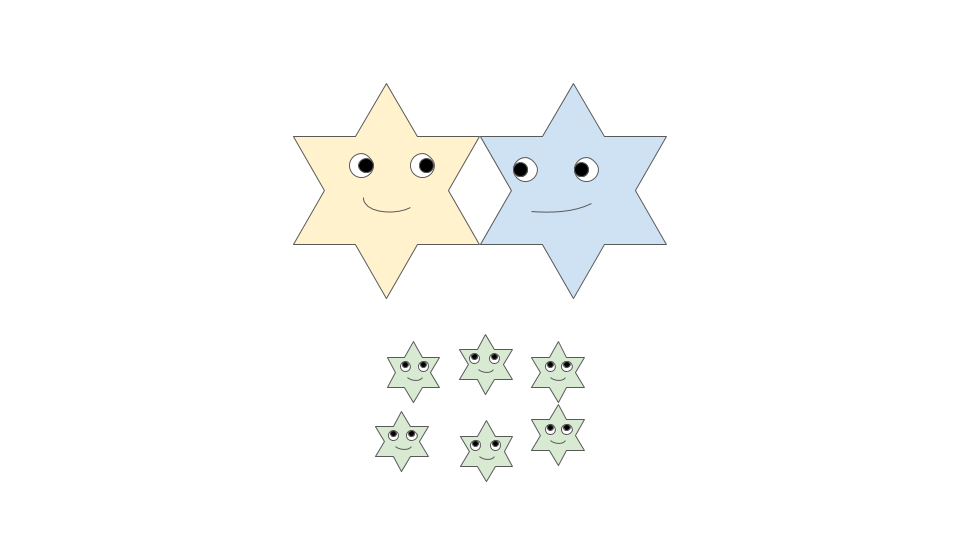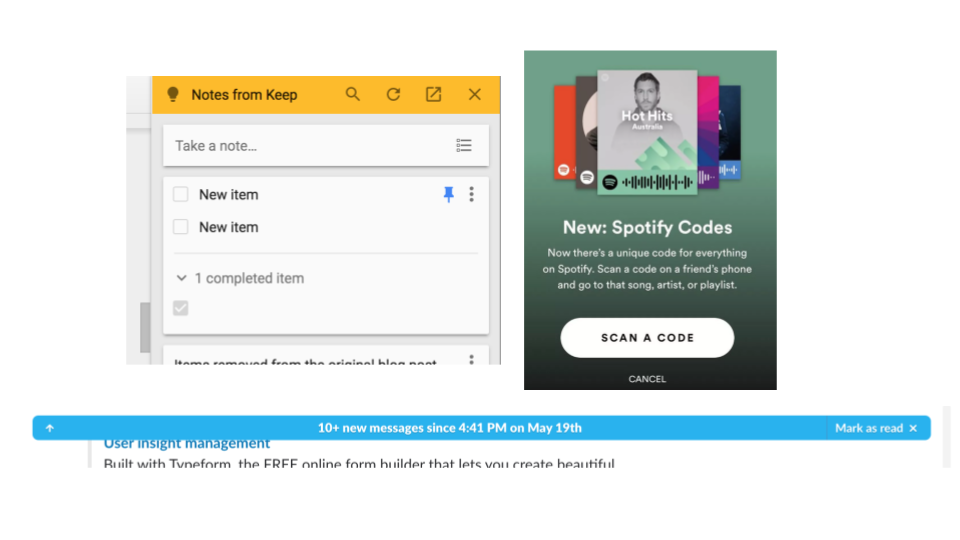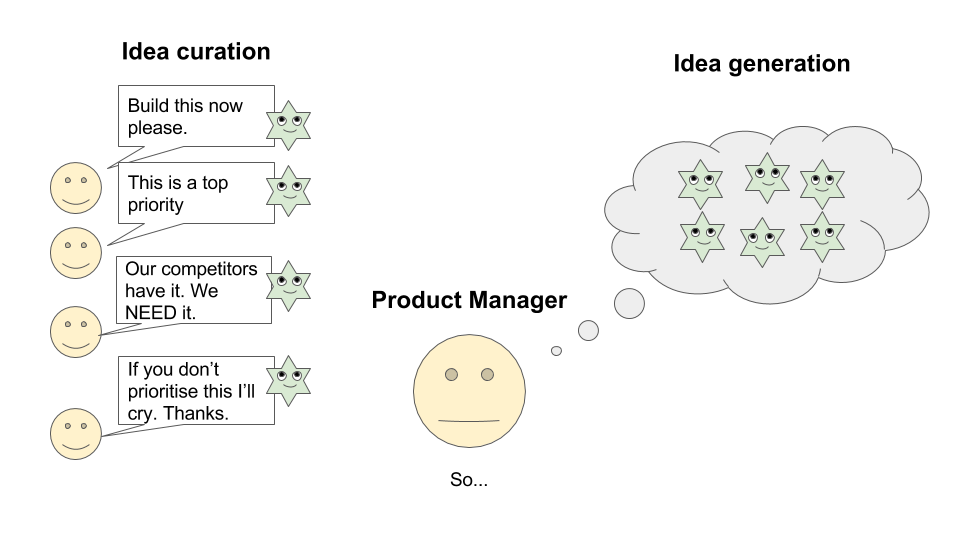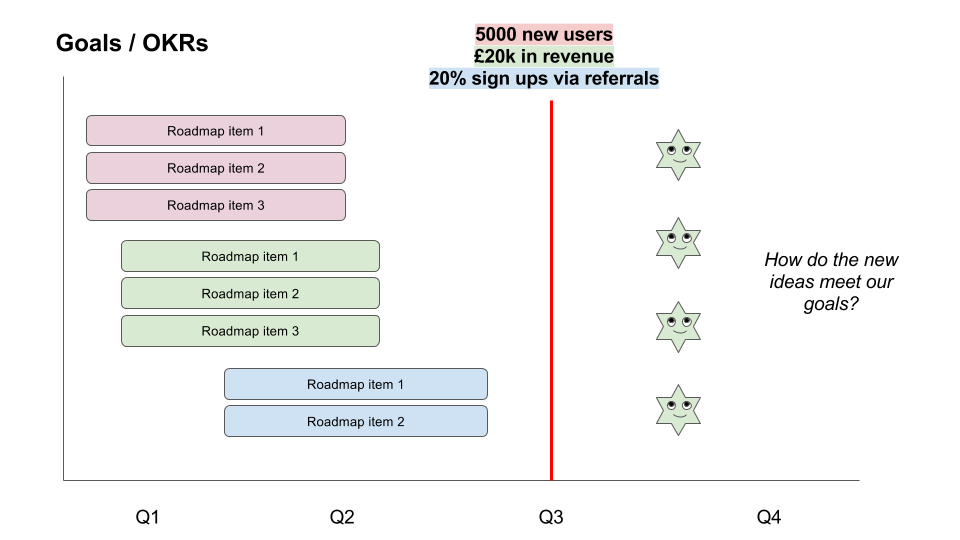How to Master the Currency of Ideas
Become all powerful by mastering the art of ideas
We create them, curate them, destroy them, idolise the people who generate them and cling onto our own as though they’re our children. To be known as the ‘ideas person’ is for some reason feels like the ultimate kudos and a high five to your ego. To be a master in the currency of ideas means you’re all powerful.
What would happen if there were no ideas?
Ideas are the ultimate currency for product people. Without ideas there would be no products. We trade in ideas every day. We say no to ideas 99% of the time, we aim to solve problems with ideas and we delicately articulate the reasons why the CEO’s latest idea may be nothing more than fleeting bag of nonsense that will distract us from our goals.
As product managers we are expected to be both idea generators and idea curators; a complex blend of creativity, empathy and judgement, all the while ensuring that we don’t prioritise our own ideas above the ideas of our peers and we build the right product for the right people.
Ideas are our currency.
And there’s a variety of ways in which the currency of ideas is used when building products. Let’s focus on some of the most powerful ways you can use ideas to become an idea master:
- How to generate ideas
- How to curate ideas and
- How to become known as the ideas person
How to generate ideas

Whilst I’d argue that most of our time is spent curating ideas, the capability to generate ideas on the spot is incredibly useful. Here’s a few ways in which you can become better at generating ideas.
1. Idea sandwiches
Idea sandwiches are where you take 2 or more unrelated ideas, concepts, words, objects and characteristics and force connections between them to solve problems and create new perspectives and ideas. The more lateral distance between the 2 ideas, the more creative the offspring of your idea sandwich tends to be.
Let’s look at an example.
Here’s a table with 2 columns: 1 is a list of items from my to do list and the other is a list of apps on my phone. Combining these 2 completely independent lists of items could lead to new, creative ideas – many of which are a little crazy, but the exercise forces your brain to make connections between unrelated concepts.
| My to do list | Apps on my phone | Idea sandwich |
|---|---|---|
| Buy Avocados | Evernote | A breakfast documenting app which is exclusively used to document, photograph and diarise what I eat for breakfast |
| Buy dark chocolate | Citymapper | Dark chocolate = bitter. Bitter = unhappy / sad. A collection of the saddest places in [City]. |
| Contact my mum | Shopify | An ecommerce marketplace exclusively built for mums to buy and sell things from other mums |
The 2 columns don’t have to be limited to things to dos or apps on your phone. They could be objects in your home, the contents of your bag, a list of your favourite TV shows – anything. The important steps are to identify the characteristics of the 2 concepts and then force a connection between the 2. It’s difficult at first but with a little practice you’ll find yourself being capable of creating idea sandwiches from even the most unrelated of things.
2. Feature theft

Another way to create an idea sandwich is to steal features from different products and apply them to your own product. It’s naughty, but if it’s good enough for Instagram it’s good enough for you.
Let’s imagine you work at as an ecommerce product manager and you’re coming up with innovative new ideas for your quarterly strategy to sit alongside your existing roadmap of UX improvements and ideas.
You notice a few new features that have been launched on other products you use regularly and you wonder how these might apply to your vertical.
The features you have your eye on are:
- The new threaded conversations in Slack
- The ‘share my barcode’ and listen to my song on Spotify’s mobile app
- The Keep notepad added to Google Docs
How could these 3 seemingly unrelated features be stolen and applied to your ecommerce product to enhance the user experience and achieve your goals?
| Feature | Lateral application to your product |
|---|---|
| The new threaded conversations on Slack | A new chat feature between buyers and sellers on your ecommerce customer A notification for your customer service team to let them know that customers have responded to a query Threaded purchases – a timeline history of all a buyer’s purchases allowing easy repurchasing of old items |
| The ‘share my barcode’ and listen to my song on Spotify’s mobile app | A new discount / referral scheme which is allows users to share vouchers with people nearby |
| The Keep notepad added to Google Docs | The ability for buyers to make annotations and notes directly onto the products you sell The ability for buyers to hand write personal notes using either the keyboard or track pad and include them in the box |
The more connections you’re able to force between ideas, concepts and features from other products, the better you’ll become at identifying trends and concepts and applying them to your own product in creative ways.
3. Get your idea muscle in shape
Generating ideas is a habit and in order to get better at generating ideas you need to flex your idea muscle. This means writing down ideas. Yes,, even the ones that appear to be the shittiest of ideas, just so you get into the habit of producing ideas.
Part of the problem with idea generation is that many of us are frightened that our idea isn’t good enough or that it will be ridiculed. The more embarrassed or fearful you are that your idea is bad, the more likely it is that your idea will be bad since stress is known to reduce cognitive efficiency. So it’s important to embrace your ideas – even if they are shit. The practise will do you good.
The best way to overcome the fear of generating bad ideas is to get used to the habit of writing down ideas – ideally daily.
For example, you could write down ideas about:
- All the ways you could improve your pair of shoes
- 10 ways to generate $100 tomorrow
- 5 ways to improve your friend’s business
Condition yourself to get used to the process of idea generation – and not passive consumption of other people’s ideas – and your idea muscle will start to get flexed enough to apply creativity and idea generation to your own business.
4. Eat idea generating foods
Ideas are generated in the brain. Yet we spend a surprisingly small amount of time thinking about or discussing the energy needs of our brain, despite the fact that our brains use up around 20% of our overall energy.
For optimal brain energy, step away from the sugar and processed carbohydrates and instead feast on healthy fats like grass fed butter, coconut oil, avocados and nuts. One of the benefits of eating a high fat, medium protein and low carbohydrate diet such as the ketogenic diet is that it optimises the energy supply to the brain, which means you’ll feel more switched on and will become significantly better at generating ideas. Ketosis (where the body uses ketones as its main fuel supply) means you’ll experience a powerful, and slightly unnerving sense of clarity. Switching to this kind of diet feels like upgrading your body’s fuel supply from polluted diesel to clean, renewable energy and your idea generating machine will be all the better for it.
Here’s a quick summary of a diet called The Bulletproof Diet, which is designed to optimise brain health and energy.
Your primary sources of fuel are good quality fats, and you avoid highly processed carbohydrates which are known to cause brain fog.
And here’s a nifty list of 100 ways people have found to be useful for maximising their brain energy.
5. Experience weird things
If your life is resembling groundhog day, this is likely stifling your creativity.
Studies have shown that highly creative individuals have often experienced a disproportionate number of ‘unusual and unexpected’ events.
Just as you can combine 2 seemingly unrelated objects or concepts together to generate creative ideas, experiencing unusual or unexpected experiences can give you a depth of experience and memories to call upon when you’re generating new concepts.
You don’t have to travel the world to create these unusual and expected events. Even simple things such as taking a different route to work or spending the weekend in a tent somewhere can force you outside of your existing thought patterns and into a new state of creativity.
6. Calm the brain storm
Brainstorms, ‘thought showers’ or whatever ridiculous politically correct term is used for them these days, have been routinely proven to be really bad ways of generating ideas. What typically happens in brain storms is that the loud, obnoxious, forceful members of a group (also known as salespeople), get to force their ideas down everyone else’s throat, leaving the less extroverted members of a brain storm sat in silence with a sharpie and a post it note, seething on the inside and wondering where it all went wrong.
To avoid this, change the setup of your brain storm slightly. Before the storm, send a note around and ask the attendees in your meeting to come prepared with ideas beforehand.
During the meeting, everyone reads out the ideas they’ve come prepared with. Rather than using the brain storm itself to generate the ideas, the time is instead spent listening to the ideas that have been prepared in advance, meaning that everyone’s ideas are measured equally and not measured by the volume of the participants voices.
Some studies have shown that, surprisingly, humans will often generate better ideas when working alone than when locked in a room with others. That’s not to say you shouldn’t have brainstorming sessions, just that the output will be better if you allow time for structured ideation before the session. Ping around a note beforehand asking people to come with ideas prepared for a particular problem you’re trying to solve or goal you’re hoping to achieve.
2. How to curate ideas

There’s a degree of sensitivity that’s needed when assessing and curating ideas. If a stakeholder has come up with an idea, it’s highly likely that they’ll think this idea is suddenly the most important thing in the world that needs to be addressed immediately. Long gone and forgotten are the 50 other requests from the previous 2 months; this new idea is THE idea that will solve most of your business’ problems and it must be implemented now. If it gets implemented, so many good things will happen:
- You’re guaranteed extra revenue
- This new corporate client will love it
- You’re going to be beat all the competitors; none of them have this 1 feature!
And clearly, if it doesn’t get implemented, bad things will happen.
- The client will never spend a penny with you again
- The customer is going to give you a bad review on trustedreviews
- You’re literally going to lose everything if you don’t build this 1 idea
And then you don’t implement the idea and nothing bad happens. Literally.
But sometimes new ideas can be worth listening to. And they can change the course of your product.
So what do you do when an idea comes along? You curate them.
1. Deal with idea snobbery
What’s idea snobbery? Idea snobbery is the notion that the validity of an idea is linked to a person’s pay grade or scale in the corporate hierarchy. I’ve often sat in meetings where an idea will get more attention or priority just because the mouth that said it is more valuable than the ears that listened to it. Whilst it’s certainly true that in organisations decisions do often need to be made by the highest paid person in times of departmental stalemate or conflict, sometimes the most creative idea generators are not the people you’d expect, and you need to be aware of your biases when assessing ideas.
2. Remove emotional attachment
Everyone, including you, loves their own ‘good’ ideas. Whilst we might be fearful that many of our ideas are shit, once we decide an idea is good there’s no stopping us. In order to objectively assess an idea you’re going to need to disassociate yourself from it. Stop referring to it as ‘my idea’ and using phrases like ‘I think’ and instead talk about your in objective terms; what the idea is and why it’s important to your product. If possible, wait a few hours or days from the time you generated the idea to the time you need to assess it. The initial excitement will dissipate after a while, leaving you sober enough to assess your idea without prejudice.
3. Record it
Once you have an idea, the first thing you’ll need to do is dump the idea somewhere. Either you can do this yourself or you can allow the idea generator to do it themselves. If a stakeholder comes up with an idea, ensure you have a place that either they or someone else can dump it. This will ensure your stakeholders feel as though you’re listening to their ideas. Trello works well for this.
4. Destroy it
If you think an idea might have legs, a fun way to curate an idea is to destroy it in as many ways as possible. Tear it to piece and destroy all the reasons why it’s a good idea. Attack it from different perspectives. How would someone outside of the walls of your business react to this idea? Why would this idea annoy your existing user base? What is the single worst thing about this idea? What are the risks involved in pursuing this idea? What is the absolute worst thing we think may happen if we go ahead? Pick apart every aspect of the idea and test how resilient the idea is to your stress test. Email 10 people about the idea and get their feedback; not 10 people sat on your bank of days – try 10 different people.
If it’s still standing on 2 feet after you’ve mauled it to death, it could be a keeper. If not, wave goodbye. A word of caution: you’ll often find that it’s the people who will bear the brunt of doing most of the work or the people who will be most impacted operationally if the idea is pursued who will be the most vocally opposed to it. That isn’t to say that this person is lazy (although some are), just that when you’re used to things being done a certain way you’re naturally defensive to change and newness.
5. Love it
Talk through all the reasons why this idea is awesome. List all the ways in which it could improve your product and why your company is uniquely positioned to launch this new feature or implement this new idea.
6. Map it
If your idea has survived the stress test of destruction, take it to the next stage. There are countless ways to map ideas using complex matrices and charts. Here’s some examples of evaluation matrixes you can use:
Impact vs. effort

The classic impact vs. effort is still useful. It allows you to map your quick wins vs. the bigger challenges on a canvas that can be easily distributed throughout your organisation. It’s often (rightly) criticised for.
Idea vs. Product goals / OKRs

Take your idea and map it against your product goals or OKRs. Ask questions about your idea in the context of your product goals. For example, if your number 1 goal is to grow the number of referrals, map your ideas against this goal. If the idea is in no way linked to your product goals, think twice about its importance.
Idea vs. Product Value proposition
Ask whether your idea is inherently linked to your core value proposition. For example, let’s say you work at an English language learning company. Your value proposition is therefore to teach people English. When assessing an idea you could ask the question ‘Does this teach people English’? If it doesn’t, there needs to be a strong reason why you would do something which is not explicitly tied to the value your product is delivering. This is clearly a narrow approach since ideas will not always be directly relatable back to your core value but it can be useful for startups, where absolute ruthless prioritisation is a must.
7. Test it
The truth is that not many companies outside of the startup ecosystem are completely comfortable with the idea of testing ideas in real world scenarios. In startups, the MVP mantra is well understood and exercised with the idea of iterating your way to an idea that works. You build the minimum viable version of something – or you might not even build anything other than a clickable prototype and you test it on your audience. Whilst I have some reservations around the notion of experimenting your way to a building viable product and business model, experimenting to find product market fit is a powerful way to test whether your idea has legs.
In larger corporates, ideas and features are not tested in the same whimsical ways that startups are free to do; inter-departmental meetings need to take place, budgets need to be signed off and stakeholders all need to be made aware of key decisions before they are even tested with real users. The best way to test ideas in corporates is to operate under the radar; that is to tell no one internally about your plan to test an idea.
Telling people you’re going to test an idea will only attract unnecessary bureaucratic nonsense. Instead, be bold and spend a few dollars on some facebook ads (expense them later) targeting your audience, invite a few people into the office and talk them through your ideas.
Then tell no one about what you’ve done; but everyone about the insights you gained as a result.
How to be known as the ‘ideas person’
Once you’ve acquired the power of generating and curating ideas, you’ll want to become known as the ideas person. Why? Being linked to creativity and idea generation means:
- You’ll carve out a niche for yourself in your organisation
- You’re more likely to get asked for your input on projects and problems
- You’ll be viewed as a highly valuable member of your team who can solve problems
How do you get to Idea Mastery? Here’s how: give away your ideas to others for free.
We’re often protective of our own ideas for fear that other people will steal them – particularly when it comes to business ideas. Get over it!
99% of other people are too lazy to steal your ideas, so loosen up – and give them away freely.
Once you’re used to generating ideas, start giving them away to people you’d like to help. Stakeholders, colleagues, managers and members of your team. Come up with an abundance of ideas that solve problems for each of these colleagues and they’ll not only remember it, but, as the laws of reciprocity dictate, they’ll feel compelled to reward you in the future. But don’t do it for the reciprocation; do it because you can!



